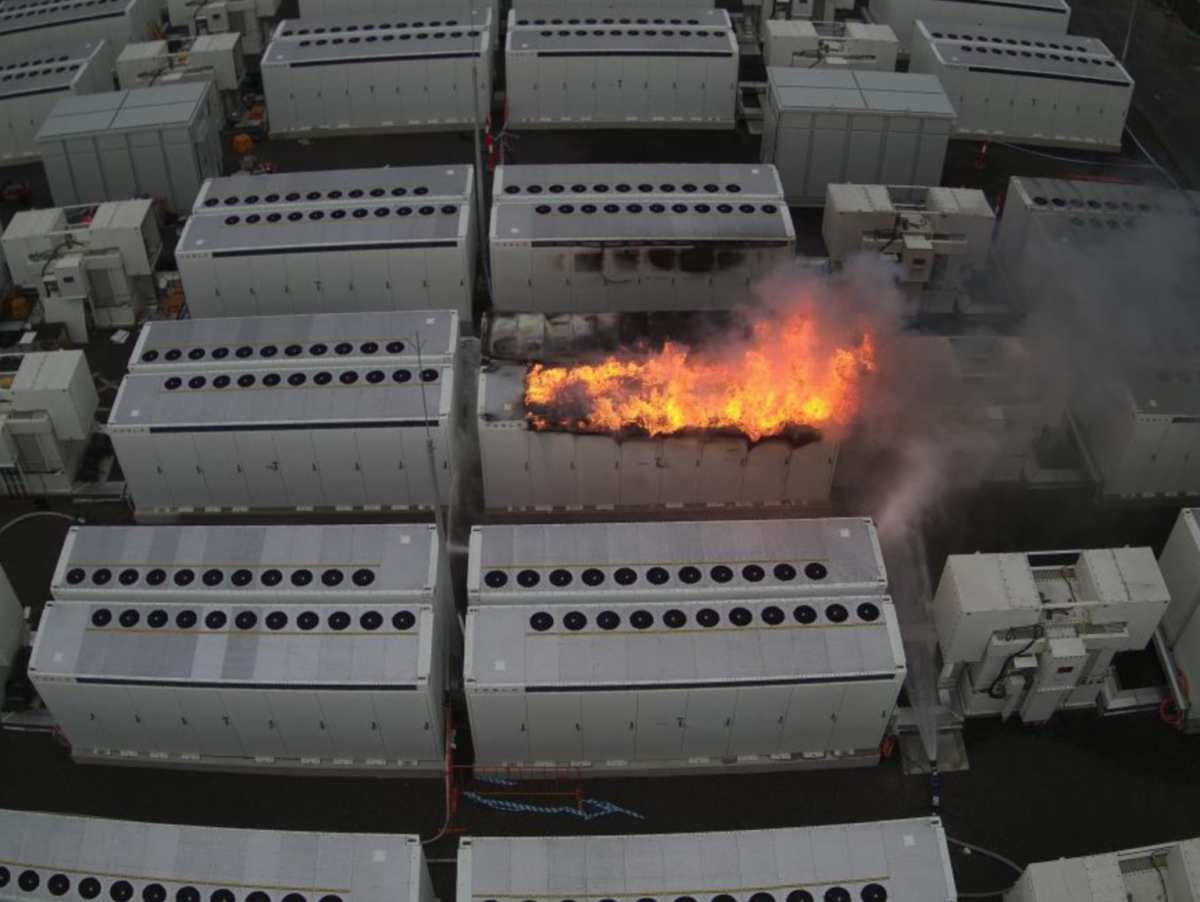The findings of an investigation into a fire that broke out during the commissioning of Australia’s biggest battery have finally been released, with the most likely root cause deemed to be a leak within its Tesla Megapack cooling system.
The blaze at the Neoen-owned 300 MW/450 MWh Victorian Big Battery – one of the largest battery energy storage systems in the world – unsurprisingly led to renewed global discussions around the safety of lithium-ion battery technologies. The multi-party independent investigation into the fire showed that the system in place to detect faults didn’t set off alarms because it hadn’t been given adequate time to “map” the control system, which generally takes around 24 hours. The Megapack that caught fire was switched to offline mode after just 13 hours in service, meaning that the protection systems which should have been operating and providing oversight did not do so.
“The cause of the fire was identified as coinciding short circuits in two particular locations likely initiated by a coolant leak external to the battery compartment,” Energy Safe Victoria said in a statement published this week. “Enabled by this unlikely sequence of events the fault was able to go undetected and initiate a fire in the adjacent battery compartment. Mitigating actions have been put in place at the facility and across Tesla’s global Megapack fleet, including a combination of firmware enhancements, as well as monitoring and process improvements.”
Following the conclusion of the investigations, which additionally involved the Country Fire Authority, WorkSafe Victoria, and the Environment Protection Authority, the regulatory authorities have provided Neoen and Tesla with approval to resume energization testing from Sept. 29.

Action list
In regard to the Victorian Big Battery fire, the following actions have been enforced:
- Each Megapack cooling system is to be fully functionally and pressure tested when installed on site and before it is put into service
- Each Megapack cooling system in its entirety is to be physically inspected for leaks after it has been functionally and pressure tested on site
- The SCADA system has been modified so that it now “maps” in one hour and this is to be verified before power flow is enabled to ensure real-time data is available to operators
- A new “battery module isolation loss” alarm has been added to the firmware; this modification also automatically removes the battery module from service until the alarm is investigated
- Changes have been made to the procedure for the usage of the key lock for Megapacks during commissioning and operation to ensure the telemetry system is operational
- The high-voltage controller (HVC) that operates the pyrotechnic fuse remains in service when the key lock is isolated
Designers are also working to ensure that Megapacks are engineered to fully mitigate the risk of fire propagation from one unit to another under Victorian climatic conditions, with proposed mitigation procedures to be rolled out to applicable Megapacks globally.
The issue of large-scale battery performance and safety will be a key topic at pv magazine’s upcoming Insight Australia event, which will include a case study of the Victoria blaze.
This content is protected by copyright and may not be reused. If you want to cooperate with us and would like to reuse some of our content, please contact: editors@pv-magazine.com.




By submitting this form you agree to pv magazine using your data for the purposes of publishing your comment.
Your personal data will only be disclosed or otherwise transmitted to third parties for the purposes of spam filtering or if this is necessary for technical maintenance of the website. Any other transfer to third parties will not take place unless this is justified on the basis of applicable data protection regulations or if pv magazine is legally obliged to do so.
You may revoke this consent at any time with effect for the future, in which case your personal data will be deleted immediately. Otherwise, your data will be deleted if pv magazine has processed your request or the purpose of data storage is fulfilled.
Further information on data privacy can be found in our Data Protection Policy.